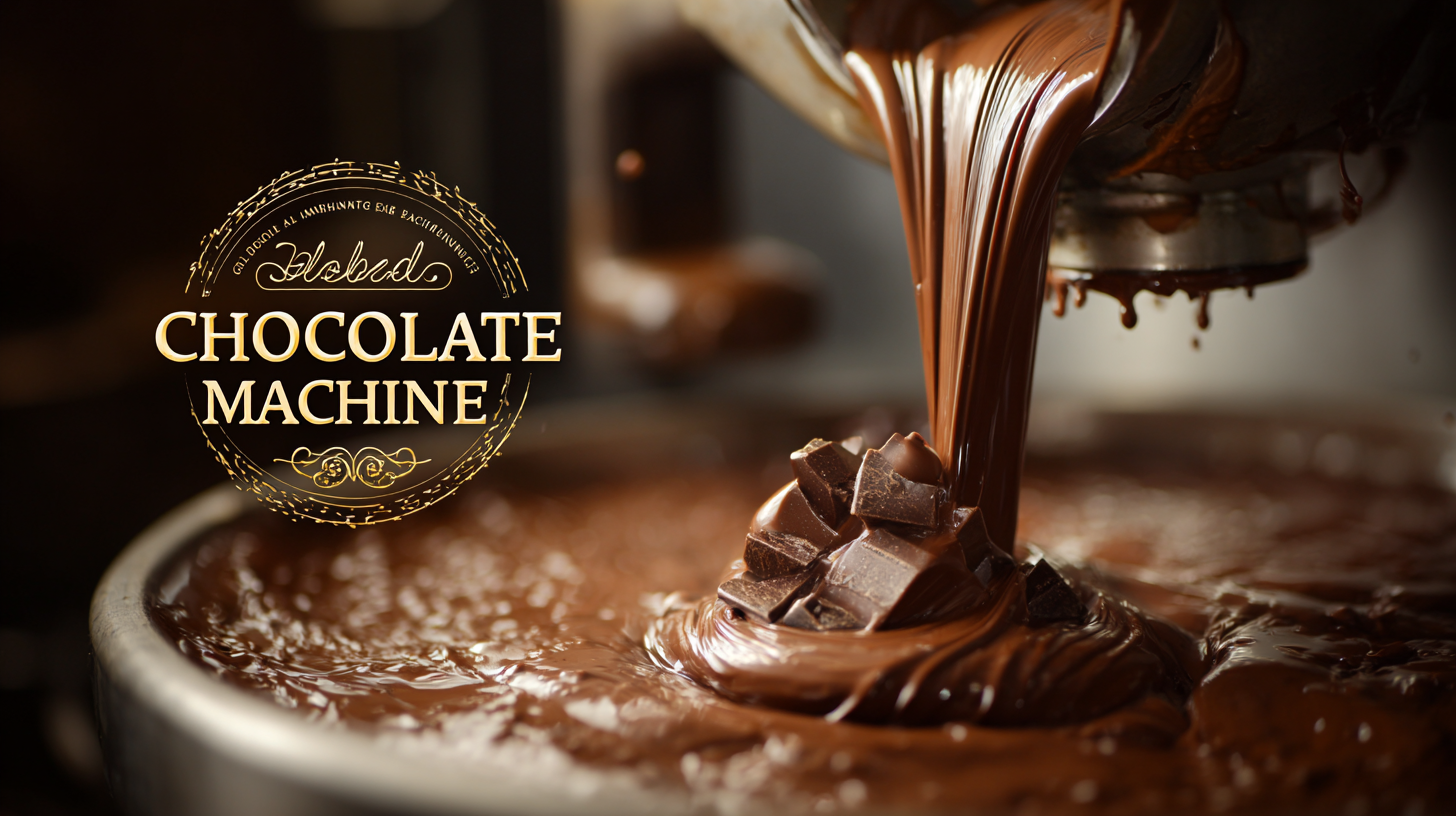In recent years, the world of hot chocolate has witnessed a remarkable transformation, driven by innovative technologies and exceptional craftsmanship, particularly from China. The Hot Chocolate Maker Machine has emerged as a quintessential device, combining tradition with cutting-edge advancements to elevate the art of making rich, velvety hot chocolate. This blog will explore the significant advantages of after-sales service and the cost-effectiveness of repairs associated with these machines. By examining real-life examples, we aim to illuminate how Chinese innovation not only enhances the user experience but also ensures that customers can enjoy their beloved hot chocolate with minimal hassle and expense. Join us as we delve into the fine points that make the Hot Chocolate Maker Machine a symbol of modern excellence in the culinary world.

Chinese innovation is making waves in the gourmet hot chocolate market, positioning the country as a significant player in this sweet segment. The hot chocolate market is anticipated to experience substantial growth, expanding from USD 3.5 billion in 2024 to USD 5.2 billion by 2033, with a healthy CAGR of 4.5%. This growth is fueled by the emergence of innovative chocolatiers who are embracing both small-batch artistry and large-scale production techniques, introducing unique flavor profiles that captivate consumers.
Moreover, the broader chocolate confectionery market is also witnessing impressive trends, projected to reach USD 167.1 billion by 2025 with a CAGR of 7.1% from 2025 to 2035. Within this thriving landscape, Chinese artisans are harnessing traditional techniques and modern technology to create exceptional hot chocolate experiences, often using high-quality local ingredients. As these chocolatiers continue to experiment and push boundaries, they not only elevate the standards of hot chocolate production but also contribute to a global appreciation of Chinese culinary innovation in dessert making.

The craft of hot chocolate making has evolved remarkably over the years, blending traditional techniques with modern innovations. Traditional methods often highlight the rich history of cacao cultivation, focusing on hand-selecting cocoa beans and using artisanal processes to ensure the perfect balance of flavor and texture. These time-honored practices emphasize the art of slow melting, whisking, and frothing, often involving a careful blend of spices and milk to create a decadent and aromatic experience. Such methods not only preserve the essence of ancient culinary traditions but also enhance the connection between the chocolatier and their craft.
In contrast, modern methods have introduced an array of technological advancements that revolutionize hot chocolate preparation. Innovations such as precision tempering machines, temperature-controlled melting pots, and high-speed blenders enable chocolatiers to achieve consistency and efficiency previously unattainable. Furthermore, contemporary practices often incorporate unique flavor infusions and alternative ingredients, catering to diverse palates and dietary preferences. This fusion of tradition and modernity not only broadens the appeal of hot chocolate but also showcases how Chinese innovation is leading the way in this global pursuit of excellence in one of the world's favorite indulgences.
| Aspect | Traditional Techniques | Modern Methods | Innovation Impact |
|---|---|---|---|
| Ingredients | Natural cacao beans | Blends with processed cocoa | Enhanced flavor profiles |
| Preparation | Manual grinding and brewing | Machine-assisted processing | Consistent quality and speed |
| Presentation | Handcrafted mugs | Designer mugs and packaging | Visual appeal for marketing |
| Serving Styles | Warm cups, simple toppings | Diverse toppings and flavors | Customized experiences for consumers |
| Cultural Significance | Traditionally celebrated drink | Modern dessert experience | Global fusion and innovation |
The global chocolate market is primed for innovation, with Chinese manufacturers emerging as leaders in quality standards. A recent report by Mordor Intelligence highlighted that the global chocolate market is expected to reach USD 162.24 billion by 2024, driven by increasing demand for premium products. Chinese manufacturers are tapping into this trend by setting rigorous quality benchmarks that not only meet but exceed international standards. This commitment to excellence is evident in their sourcing of high-quality cocoa beans and the implementation of advanced production technologies.

Moreover, China's hot chocolate segment is witnessing rapid growth, with Statista forecasting a revenue increase to USD 2.4 billion by 2025. Chinese companies are embracing innovations such as organic and artisanal hot chocolate, which cater to the evolving preferences of health-conscious consumers. By adhering to quality certifications like ISO 22000 and leveraging state-of-the-art processing techniques, they are redefining perceptions of chocolate excellence on a global scale. As a result, Chinese manufacturers are not just participants but are setting the pace for quality in the hot chocolate industry worldwide.
Sustainable sourcing in hot chocolate making is crucial for ensuring ethical practices throughout the cocoa supply chain. According to a report by the World Cocoa Foundation, about 70% of the world's cocoa supply comes from West Africa, where many farmers face poverty and exploitation. By prioritizing ethical sourcing, chocolate makers can contribute to fair wages and better living conditions for these farmers, ensuring that consumers can enjoy their hot chocolate with a clear conscience.
To incorporate sustainable practices in your own chocolate-making endeavors, consider sourcing cocoa from certified suppliers who prioritize fair trade and social responsibility. Look for brands that participate in programs such as Fair Trade or Rainforest Alliance, which not only ensure better prices for farmers but also promote sustainable agricultural practices.
Tip: When shopping for cocoa, check labels for certifications that guarantee ethical sourcing.
Additionally, integrating innovative practices such as sourcing from local farms can enhance sustainability while supporting the community. The Global Cocoa Sustainability Initiative highlights that local sourcing can reduce transportation emissions and foster stronger relationships between producers and consumers.
Tip: Connect with local cocoa farmers or cooperatives to explore unique flavors and support ethical practices in your region.
The art of hot chocolate making has transcended borders, becoming a medium for cultural exchange that enriches communities around the world. Chinese innovation has breathed new life into this age-old beverage, melding traditional practices with modern techniques to craft sophisticated flavors and presentations. As local artisans experiment with ingredients like Sichuan peppercorns and matcha, they not only create unique profiles but also invite the world to taste the richness of Chinese culinary heritage. This fusion is not merely about flavor; it encapsulates stories, traditions, and the passion of a culture eager to share its nuances.
Through initiatives that promote knowledge-sharing and collaboration between chocolate makers globally, the process of hot chocolate making emerges as a platform for dialogue. International festivals celebrating chocolate now feature Chinese innovators alongside established brands from Europe and Latin America, fostering an environment where ideas can flow freely. This vibrant exchange enables participants to appreciate not just the diverse tastes but also the shared history behind each cup, reinforcing the idea that food can bridge cultural divides. Each sip of this beloved beverage becomes an experience that transcends geography, opening pathways to understanding and appreciation among diverse communities.
This chart illustrates the growing global interest in hot chocolate innovation, highlighting the consumption rates in various regions. The data showcases how Chinese innovation has influenced hot chocolate making across the world.